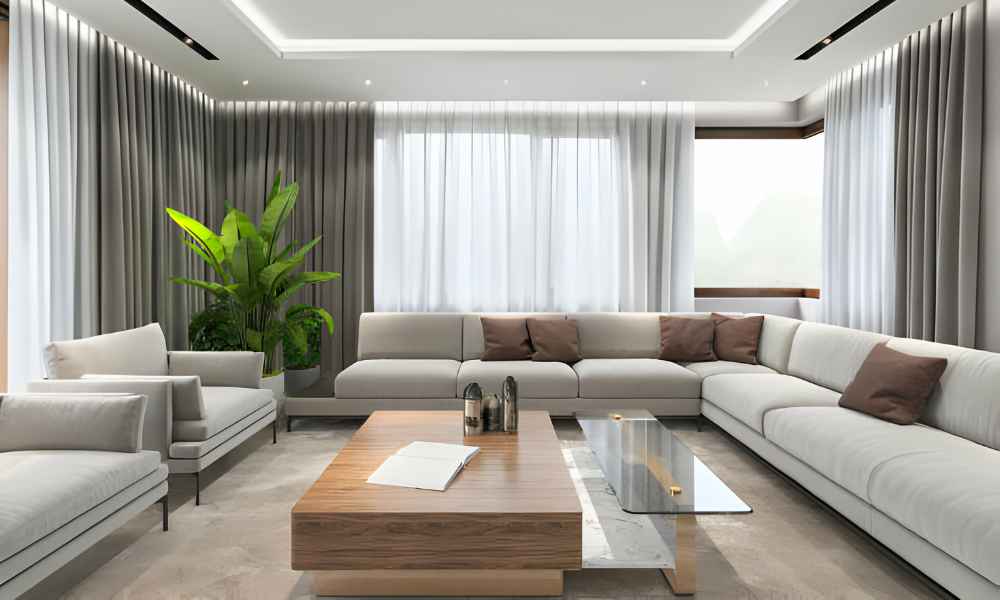Selecting the right window treatments for a formal living room is not just about covering windows but enhancing the room’s overall aesthetics and functionality. The process requires careful consideration of various factors to ensure that the chosen treatments complement the room’s design, meet your privacy needs, and control natural lighting effectively. This guide will explore essential factors to consider and offer tips for selecting the perfect window treatment for your formal living room.
Importance of Window Treatments
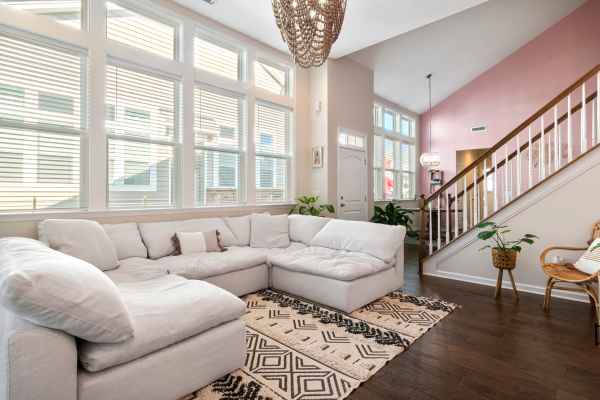
The importance of window treatments extends beyond mere decoration. They serve as a bridge between the interior’s design and the outside world, providing a seamless transition that enhances both privacy and natural lighting. In a formal living room, where the aim is to create a space that is both welcoming and stylish, the right window treatment can elevate the room’s elegance, control the ambiance through light filtration, and offer insulation during various seasons, making the space more comfortable and energy-efficient.
Types of Formal Living Room Window Treatments
Selecting window treatments for a formal living room, there are several types to consider, each offering its own advantages and unique style:
Drapes and Curtains
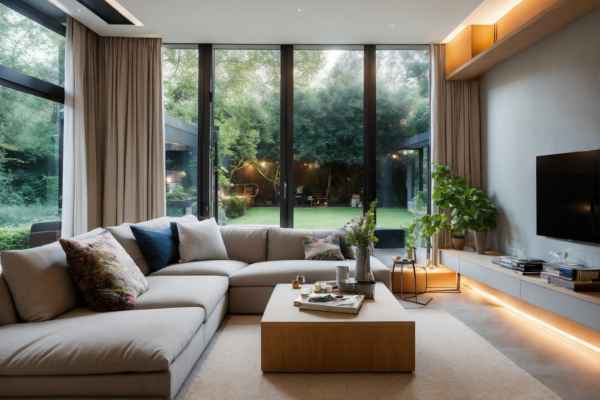
These are perhaps the most traditional choices for a formal room, offering endless possibilities in terms of fabrics, patterns, and styles. From luxurious velvets to light, flowing silks, drapes and curtains can be tailored to match any decor theme, providing both elegance and functionality. They can be hung in multiple ways and paired with decorative rods and finials to add a further layer of sophistication to the room
Roman Shades
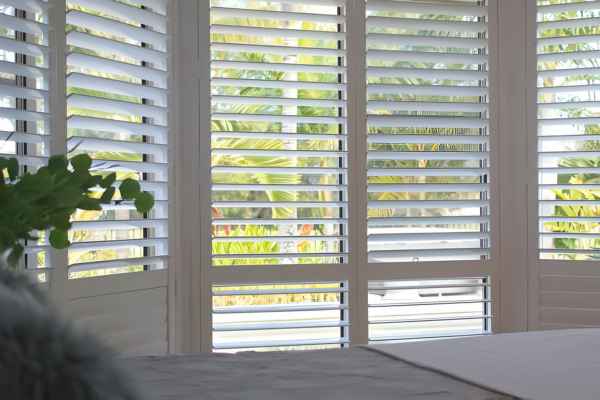
Roman shades offer a sleek and streamlined look, ideal for those seeking a blend of traditional and contemporary styles. They are available in various materials, including rich fabrics that can add depth and texture to the room. Roman shades can be adjusted to control the amount of light entering the space, combining functionality with a refined aesthetic perfectly suited for formal settings.
Valances
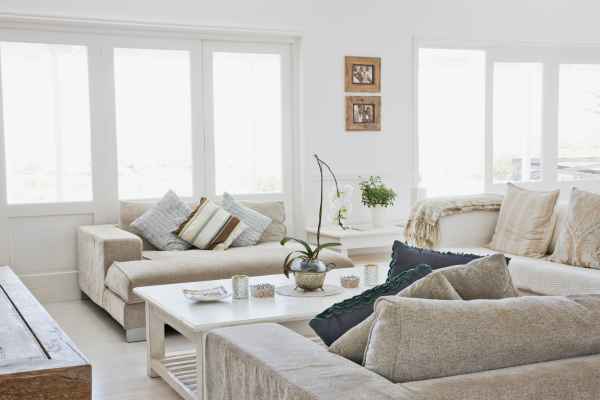
Valances, often used in conjunction with other window treatments, add a finishing touch that can tie the room’s design elements together. These decorative accents sit atop windows to conceal hardware and frame the window’s upper portion, adding height and visual interest to the space. They come in a range of styles and fabrics, allowing for a customized look that complements the formal room’s overall design.
Blinds
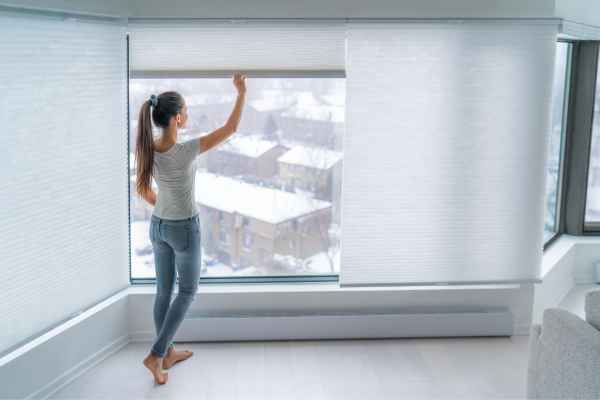
Blinds, on the other hand, offer practicality and style with their adjustable slats that control light and visibility. Available in wood, faux wood, or metal, blinds can be tailored to fit the room’s design, providing a neat and orderly appearance that aligns with the formal ambiance of the living room.
Factors to Consider When Choosing Window Treatments
Style and Design
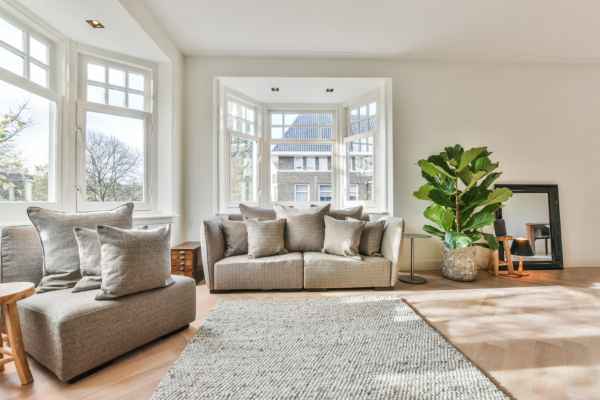
The style and design of window treatments play a pivotal role in setting the tone for your formal living area. Whether you opt for classic draperies, modern blinds, or elegant shutters, the chosen style should align with the room’s architectural features and decor theme. For a formal setting, consider treatments that offer a touch of sophistication, such as silk drapes or wood blinds, which can add to the room’s elegance while providing the desired level of privacy and light control.
Fabric and Material
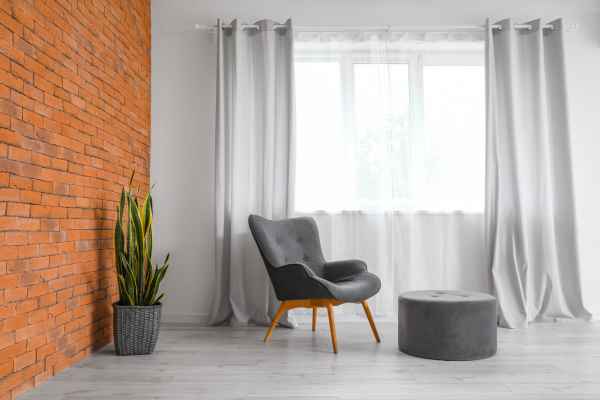
The choice of fabric and material is crucial not only for the window treatment’s aesthetic appeal but also for its durability and functionality. Heavy fabrics like velvet or brocade add warmth and richness, suitable for traditional decor, while lighter materials like linen or sheer can create a breezy, more casual feel. Additionally, the material’s opacity should be considered to ensure it meets your privacy and lighting needs.
Functionality
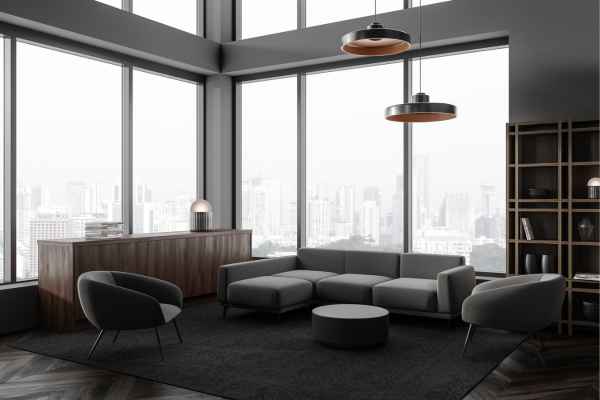
Functionality is a key aspect, especially in a formal room where the balance between privacy, light control, and aesthetics is important. Consider treatments with adjustable features like blinds or shades that can be easily opened or closed to regulate light and visibility. Motorized options can also add a level of convenience, allowing you to adjust settings with the push of a button.
Tips for Selecting the Perfect Window Treatments
Consider the Room’s Decor
Selecting window treatments, consider the room’s existing decor to ensure a cohesive look. For a formal living area with classic furnishings and rich color schemes, traditional draperies with elaborate valances or cornices might be the perfect fit. For a more contemporary space, minimalistic designs like roller shades or sleek blinds can complement the decor.
Determine Your Privacy Needs
Privacy is a significant concern in any living space. Evaluate the room’s location and the level of privacy required when choosing window treatments. Sheer curtains might offer aesthetic appeal but may not provide sufficient privacy for a living room facing the street. In such cases, consider layered treatments or opaque materials.
Assess Natural Lighting
The amount of natural light a room receives can influence your choice of window treatments. In a formal living room where too much sunlight can fade furniture and artworks, opt for treatments that offer UV protection and light control. Adjustable treatments like shades or drapes allow you to modulate light throughout the day, maintaining a balance between natural light and protection for your interiors.
Installation and Maintenance
Installation and maintenance are crucial factors that often go overlooked when selecting window treatment. Easy-to-install options like ready-made curtains and blinds can be appealing for their convenience and the possibility of DIY installation. However, for a formal living area, custom treatments might be preferred to achieve a perfect fit and look, which may require professional installation. Maintenance is another key consideration; opt for materials and designs that are easy to clean and care for. For instance, synthetic fabrics can offer the luxurious look of natural fibers but are often easier to maintain, while wood blinds require more care to keep them looking their best.
Budget-Friendly Options
While you might aspire to give your formal living room a luxurious feel, it’s essential to consider budget-friendly window treatment options that do not compromise on style or quality. Several options can offer elegance without a hefty price tag. For example, faux wood blinds or polyester drapes can mimic the look of more expensive materials at a fraction of the cost. Exploring discount stores, online sales, or even making your curtains can also be cost-effective ways to achieve a high-end look.
How Do I Measure Window Treatments?
Measuring for window treatment is a step that requires precision to ensure the perfect fit. Start by measuring the width of the window frame and then the height from the top of the frame to where you want the treatment to end. For inside mount treatments, measure the inside width and height of the window frame. For outside mounts, add extra inches to both the width and height to cover the window frame adequately. Always double-check measurements to avoid costly mistakes.
Can I Use Multiple Types of Treatments in One Room?
Mixing different types of window treatment in one room can add depth and dimension to your formal living area. For instance, layering sheer curtains with heavier drapes can offer a luxurious look while providing versatile light control and privacy options. Alternatively, combining blinds with curtains can blend functionality with aesthetic appeal. When mixing treatments, ensure they complement each other in terms of color, texture, and style to maintain a cohesive look in your formal living space.
Are formal window treatments suitable for modern decor?
Formal window treatment, often characterized by their luxurious fabrics, intricate designs, and elaborate detailing, might seem at odds with modern decor’s sleek and minimalist aesthetic. However, these treatments can indeed complement modern interiors if chosen carefully. The key is to select pieces that bridge the gap between formal elegance and contemporary simplicity. For example, choosing formal treatments in a monochromatic color scheme or opting for designs with clean lines can add a touch of sophistication to a modern living room without overwhelming it. Materials like silk or velvet in solid, neutral colors can offer the plush feel of formal decor while maintaining the understated elegance that modern design demands.
What are some common mistakes to avoid when selecting window treatments?
When selecting window treatment for any space, including a formal living area, it’s easy to fall prey to common mistakes that can detract from both the room’s beauty and functionality. One such mistake is neglecting the room’s overall design theme, leading to a clash between window treatment and interior decor. Another is overlooking the importance of proper measurement, resulting in treatments that are too long or too short, which can disrupt the room’s visual harmony. Additionally, choosing style over functionality can render the space less comfortable or practical to use, undermining the very purpose of window treatment.
Can I use window treatments to make a small room appear larger?
Interestingly, window treatments can be strategically used to alter the perception of a room’s size. To make a small room appear larger, select treatments that allow natural light to penetrate, such as sheer curtains or light-colored blinds. Hanging curtains higher than the window frame can also create the illusion of height, drawing the eye upward and making the ceilings appear taller. Furthermore, extending the curtain rod beyond the width of the window not only lets in more light but also gives the impression of a wider space. These tricks can help expand the visual square footage of a small living room, making it feel more open and airy.
Conclusion
Formal Living Room Window Treatments can beautifully complement modern decor when chosen with an eye for color, material, and simplicity, merging the best of both worlds. As you select window treatment for your formal living area, avoiding common pitfalls—such as mismatched styles, incorrect measurements, and prioritizing aesthetics over practicality—is key to achieving a harmonious and functional space. Moreover, with thoughtful selection and placement, window treatment can transform the perceived dimensions of a room, making even small spaces feel grand and inviting. Ultimately, the right window treatment not only enhances the beauty of your living room but also elevates its comfort and usability, striking a perfect balance between form and function.
